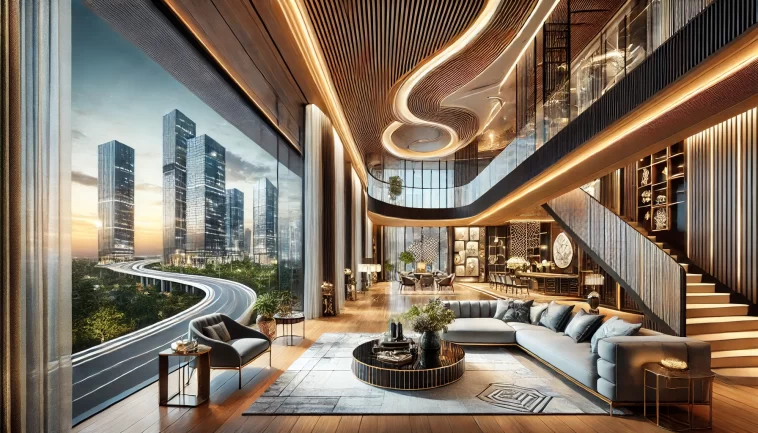In the past, architecture and interior design were treated as two distinct fields — one structural, one stylistic. But in today’s India, that’s no longer true.
Design begins with the walls, but it ends with the life inside them. Design Asia Magazine stands at the center of this intersection — where form meets function, and structure meets soul.
If you’re searching for an architecture and interior design magazine that gets modern India, welcome home.
1. Why This Combined Approach Is the Future of Design Media
Most magazines either focus purely on high-end buildings or glossy decor. The result? Fragmented content. No real synergy.
Design Asia blends:
- Spatial thinking (architecture)
- User-centric styling (interiors)
- Climate-aware, culture-specific design
Because your home isn’t just a structure. It’s an experience.
2. Core Design Themes We Cover (And Why They Matter)
🧱 Integrated Living Spaces
Open-plan layouts, flow-based zoning, and interior elements considered at the architectural stage.
🪵 Material Continuity
From external cladding to internal finishes — bamboo, lime, stone, brick — unified texture stories.
🧠 Functional Aesthetics
Lighting, ventilation, and furniture designed with the space, not added as an afterthought.
🌏 Sustainability from Shell to Sofa
Passive cooling, recycled materials, Vastu-compliant layouts, and low-impact furnishings.
Design Asia doesn’t separate disciplines — we show how they work together.
3. Who Is This Magazine For?
- Architects looking to understand interior behavior
- Interior designers who want to work with volume, light, and layout
- Design students learning holistic planning
- Real estate developers, homeowners, and creators who want end-to-end design thinking

4. The Indian Context: More Than Just Style
Most international magazines fail to capture India’s complexity:
✔️ Multiple climates
✔️ Cultural layering
✔️ Space restrictions
✔️ Multi-generational homes
✔️ Spiritual and directional design values
Design Asia is made in India, for Indian spaces. We don’t copy and paste Western case studies. We decode Indian lifestyles — from a Chennai row house to a Himachal homestay.
5. Trends We’re Seeing in 2025
Architectural Minimalism, Interior Richness
Bare forms with expressive interiors — a balanced modern Indian aesthetic.
Regional Revivals
Jaali work, chhatris, gable roofs, mud walls — modernized, not erased.
Wellness Architecture
Spaces planned around light, air flow, and mental peace — beyond just yoga rooms.
Built-in Flexibility
Layouts that adapt: breakfast bar today, study zone tomorrow. Design that grows with you.
6. Why Design Asia Magazine Is Leading the Movement
We’re not trying to be just another magazine.
We’re building:
- A hub for Indian design voices
- A platform for real projects, small or large
- A living archive of how India designs now
We cover:
- Home walkthroughs
- Architect-designer collaborations
- Product curation
- Design psychology
- Regional craft-meets-modernity
7. How to Get Featured
We love stories that show the architecture-interior handshake.
Got a project? Here’s what we look for:
- Integrated design approach
- Regional sensitivity
- Smart space use
- Strong visuals + narrative
Email us. We review every submission. If it’s smart, contextual, and real — you’re in.

Conclusion: The Line Between Architecture and Interior Design Is Gone. And That’s a Good Thing.
At Design Asia Magazine, we don’t draw a line between wall and wallpaper, between blueprint and bookrack.
We believe good architecture is incomplete without good interiors. And great interiors begin with great spatial logic.
That’s why we’re India’s only architecture and interior design magazine that truly blends both — not in name, but in every page.


